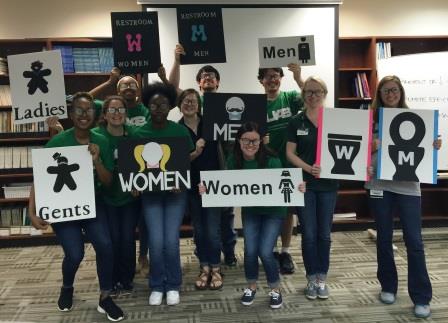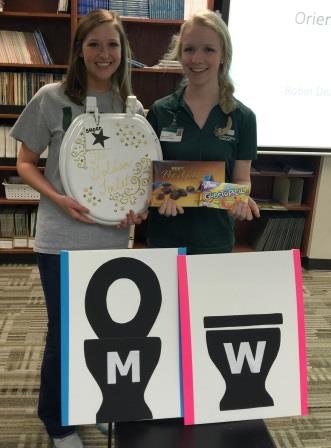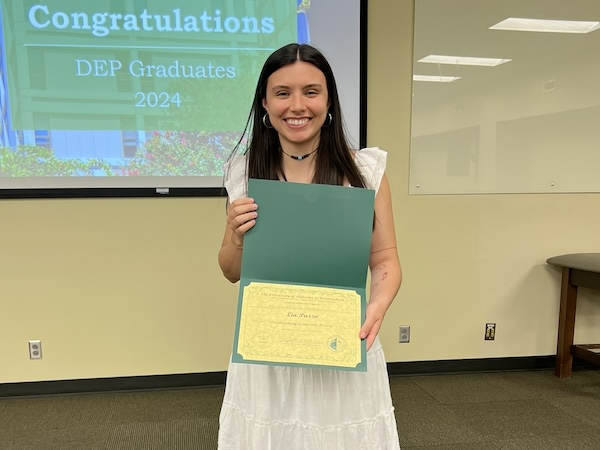 OT students wearing simulation glassesThe UAB Department of Occupational Therapy faculty are renowned for creative lessons designed to prepare students for their career upon graduation.
OT students wearing simulation glassesThe UAB Department of Occupational Therapy faculty are renowned for creative lessons designed to prepare students for their career upon graduation.The idea they had for the OT 677: Foundations in Low Vision Rehabilitation course was to have students design and build restroom signs. The catch though, was that both signs had to be reliably read by people at a distance of 10 feet with 20/200 visual acuity, which is the visual acuity of someone with cataracts. The students wore special simulation glasses so they would understand how difficult it is for people with cataracts to read signs on a daily basis.
“Through creative learning activities, our students are asked to apply concepts from lecture and lab to real life therapy situations," said Beth Barstow, Ph.D., OTR/L, SCLV, FAOTA an OT associate professor.
"We find that these types of activities best prepare our students for fieldwork and future employment,” said Deek Cunningham, MS, OTR/L, SIPT (#2623), ATP, an OT assistant professor.
 Golden Toilet Award winners
Golden Toilet Award winnersMary Beth Seale and Katie CarterIt was an idea that could have easily gone down the toilet. But instead, two students rose up to the head, of the class that is, wiped away the competition and earned a seat on the ultimate porcelain throne as winners of the inaugural UAB OT Golden Toilet Award.
The students, Katie Carter and Mary Beth Seale, both first year Occupational Therapy students in the UAB School of Health Professions, designed restroom signs with concepts of print visibility including large print, high contrast, block letters, and gender specific colors. Genius.
“We have enjoyed the opportunity of having one class solely focused on low vision and the role occupational therapy can have in improving someone's independence that is affected by poor vision. Simple modifications like magnification or high contrast colors can make a big difference in one's ability to see and function independently,” said Seale and Carter.
The winners were determined by outside judges who came into the class and scored the designs based on three criteria: 1) creativity 2) visibility and 3) feasibility.
All the OT students admitted that wearing the glasses that simulate cataracts was mentally exhausting and when the class ended they were pooped.

